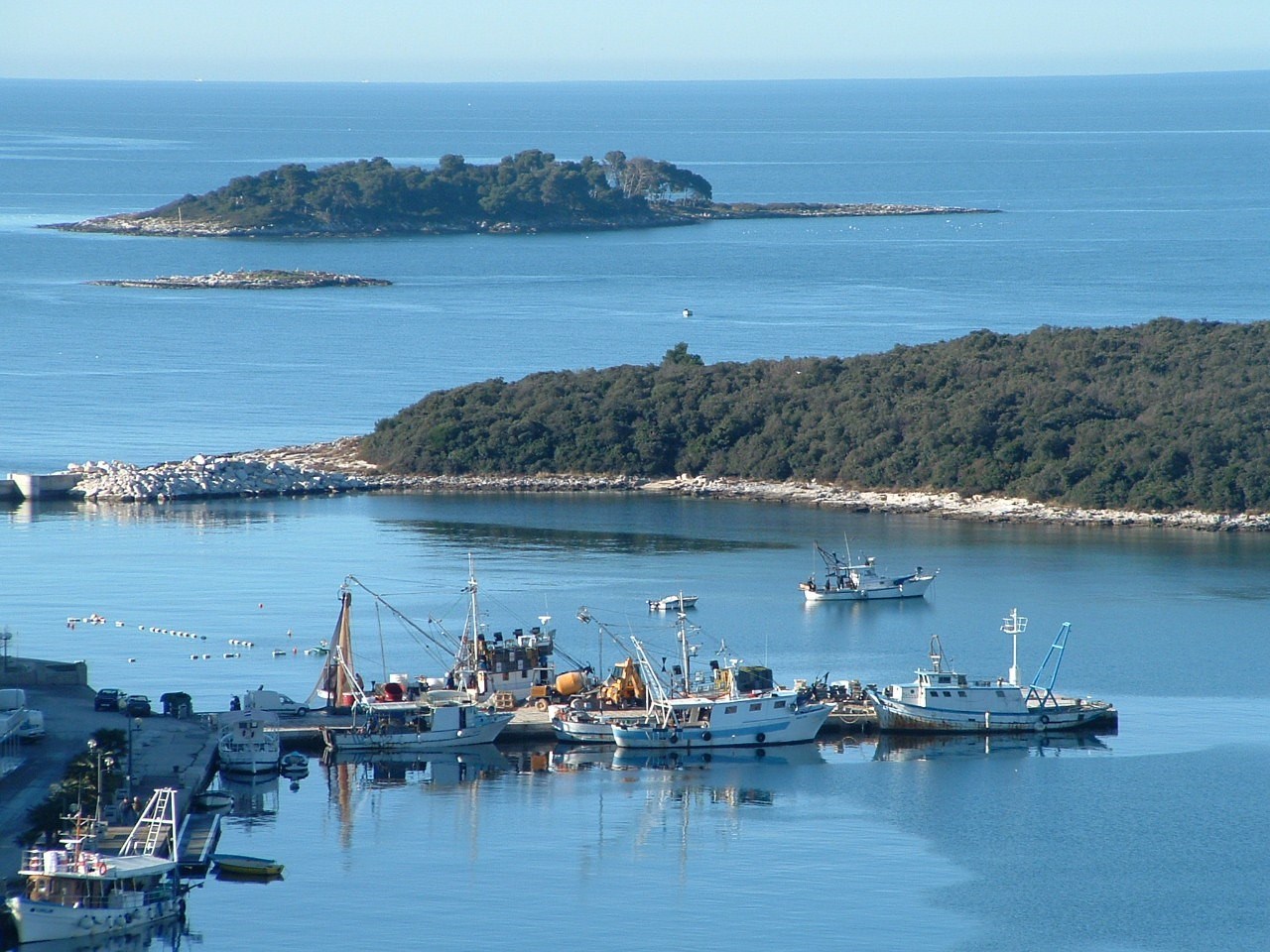

Built in the 9th century in the Romanesque style, but under a strong influence of the late Antiquity and early Byzantine construction. It is consecrated to St George, the well-known early Christian martyr. The church has a double inscribed apse and Romanesque semi-circular windows. Originally, the church contained interlaced ornaments. During the Middle Ages, it was the seat of the eponymous brotherhood.
The Church of St. George is situated on the homonymous island of St. George.

The place on which today’s Church of St George is situated is a historical locality with many layers. In the Roman times, it was the site of a rustic villa (villa rustica). It is assumed that an older church dating from the 4th century was located here. It was erected as a consequence of the adoption of the Edict of Milan in the year 313 – when Christianity ceased to be a clandestine religion. The earliest preserved traces of the existing church building date back to the 9th century, which points to the fact that the earlier 4th-century church consecrated to St George was demolished at the turn of the late Antiquity and Middle Ages.

Before World War II, the inhabitants of Vrsar used to visit the island of Sveti Juraj annually – on the feast day of St George (23 April). Nowadays, people make a sailing pilgrimage towards the island on the feast day of St George.
The second (existing) church built on this spot belongs to the specific group of single-nave early Romanesque buildings with an inscribed semi-circular apse. The Byzantine characteristics of church architecture match the known historical circumstances in Vrsar. At the time, a maritime route ran along the local shore in the vicinity of St George’s. The area was inhabited and included in the economic and maritime transport. With its style and distinct features (the double inscribed apse, proportions, window schematic, arch of the semi-circular window), the church may be reliably described as a Romanesque building. Its other features, particularly its size and windows on the southern façade, indicate stylistic details appearing on Mediterranean churches in late Antiquity and early Byzantine age, but also in the pre-Romanesque age, i.e. the age of the Frankish reign (from the 8th century onwards) until the Ottonian period (end of the 10th century).
Today’s church was built on the solid rock which constitutes the floor of the building. It is a rectangular building with two inscribed shallow semi-circular apses in the rear wall. There is mention of interlaced ornaments in the church, which would reliably date its construction to the 9th century. The church was once maintained by the eponymous brotherhood, which owned the entire island. In the 19th century, the church was partially ruined (according to some sources, it was ruined in the 1950s), while in the second half of the 20th century only walls 1-3 m in height could be seen.
The church was restored in 1996, which was the first completed cultural project of the young Municipality of Vrsar.
Before World War II, the inhabitants of Vrsar used to visit the island of Sveti Juraj annually – on the feast day of St George (23 April) – and each year the existing brass band of Vrsar provided suitable accompaniment. Nowadays, people make a sailing pilgrimage towards the island on the feast day of St George.